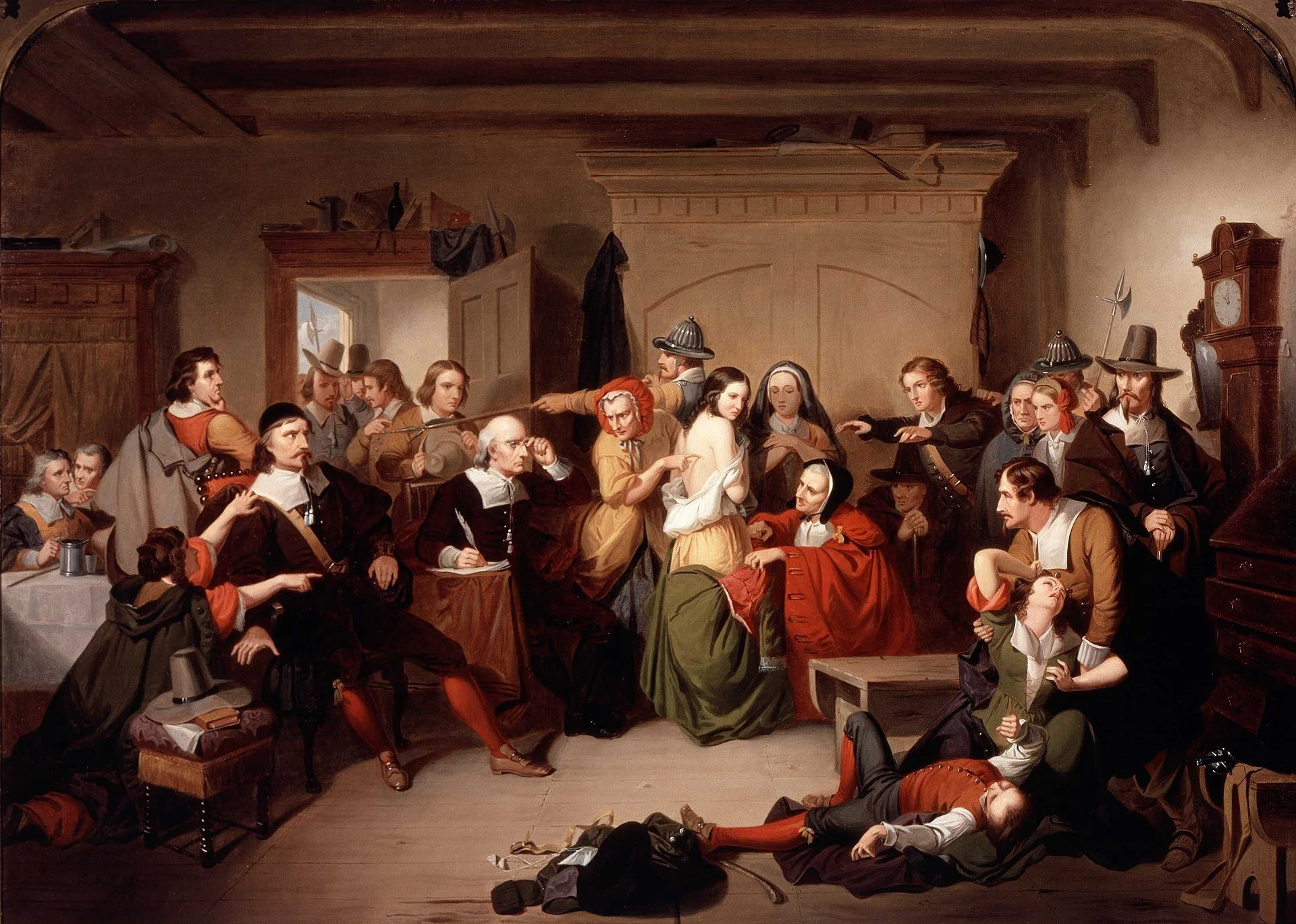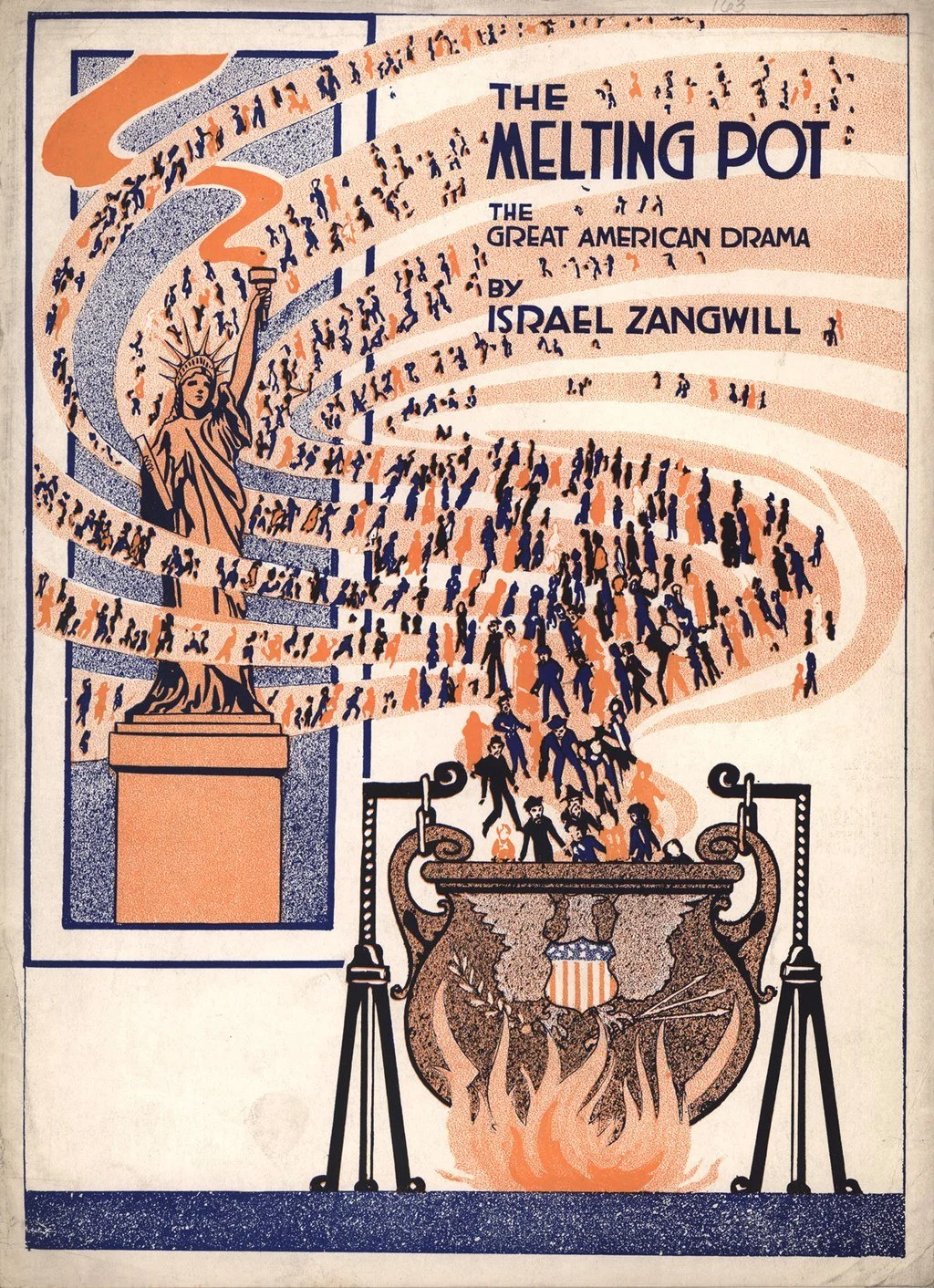
Chris Powell: The Red Guards raid city hall; hypocrisy makes the world go round
Propaganda poster for China’s Red Guards in the late 1960s.
MANCHESTER, Conn.
Connecticut now may have its equivalent of Chairman Mao's Red Guards, consisting of Central Connecticut State University students and members of the Connecticut Citizen Action Group who, according to news reports, pretended to purge racism from the office of the Republican registrar of voters at City Hall in New Britain.
Having gone to the registrar's office to obtain voter registration cards, the president of Central's Social Work Club, Taina Manick, sighted a tiny Confederate flag in a stand of four other tiny flags among some knickknacks. She was immediately triggered. She returned the next day with her colleagues and cameras to record them scolding the registrar, Peter Gostin, and asking him if he is a racist.
Gostin denied racism and confessed he had not given much thought to the flags and knickknacks, which had been sitting on a shelf in his office, unremarked, for 14 years. The Red Guards asked Gostin if he would surrender the offending flag and he quickly agreed, whereupon they lifted it in triumph, photographed it, dropped it in a trash can, laughed, and departed.
Afterward Gostin said he was glad to be rid of the source of offense but did not understand why his visitors needed to "make a big show" about it and question his character.
But of course making a big show -- displaying self-righteousness -- is the point of today's indignation industry, of which the new Red Guards may be the shock troops, and the smaller the offense, the bigger the show must be to gain attention.
Ironically, as the Red Guards were bullying the hapless registrar, the National Assessment of Educational Progress was announcing that the huge and infamous racial-performance gap in Connecticut's schools has persisted for another three years. The gap is worse in cities like New Britain. So is violent crime, which also affects racial minorities disproportionately.
Indeed, Connecticut suffers many other distressing racial disparities. None has been caused or sustained by the tiny and long-overlooked flag in the New Britain registrar's office.
But maybe the Red Guards can keep scouring Connecticut for other things from which they can claim to have taken offense. Maybe someday they will find one more relevant to social justice than their comic self-righteousness is.
xxx
A few weeks ago as the campaign of the anti-abortion Republican candidate for U.S. senator in Georgia, former football star Herschel Walker, was rocked by allegations he had paid for the abortions of former girlfriends, Democrats scorned Republicans for sticking with their candidate despite his likely hypocrisy. Republicans, Democrats sneered, cared about nothing beyond gaining a majority in the Senate.
Last week, after weeks of insisting that he had recovered from a stroke and should remain the Democratic nominee for U.S. senator from Pennsylvania, Lt. Gov. John Fetterman participated in a televised debate with the Republican candidate, Mehmet Oz, the television talk-show doctor. Because Fetterman now has trouble understanding spoken words, he was granted use of video equipment to caption the questions.
Nevertheless, even Democrats acknowledged that their candidate's performance was painful to watch. As the debate began, Fetterman's first words were, "Hi. Good night, everybody." At times he was incoherent and contradicted himself.
But, of course, Democrats are sticking with Fetterman. though elected officials need at least normal communication skills, which their candidate now lacks. Like the Republicans, the Democrats figure that nothing matters except taking control of the Senate.
And both sides have good reasons.
Republicans figure that Walker, while an ignoramus, at least will be able to take instructions from the party's Senate leadership to prevent President Biden's appointment to the Supreme Court of another judge who, to placate the Democratic Party's crazy left wing, professes not to know what a woman is.
Democrats figure that, impaired as Fetterman is, he at least will be able to take instructions from the party's Senate leadership to prevent a Republican attempt to placate the party's crazy right wing by impeaching the president for what some see as his own worsening dementia.
Politics, thy name is hypocrisy. Get used to it.
Chris Powell is a columnist for the Journal Inquirer in Manchester.
Why we need schedules
Annie Dillard.
— Photo by Phyllis Rose
At Wesleyan University, in Middletown, Conn. The view from Foss Hill: From left to right: Judd Hall, Harriman Hall (which houses the Public Affairs Center), and Olin Memorial Library
“How we spend our days is, of course, how we spend our lives. What we do with this hour, and that one, is what we are doing. A schedule defends from chaos and whim. It is a net for catching days. It is a scaffolding on which a worker can stand and labor with both hands at sections of time. A schedule is a mock-up of reason and order—willed, faked, and so brought into being; it is a peace and a haven set into the wreck of time; it is a lifeboat on which you find yourself, decades later, still living.”
―Annie Dillard (born 1945), in The Writing Life. The American author of fiction and nonfiction books taught for 21 years at Wesleyan and has long had a summer house on Outer Cape Cod, a place that she has frequently written about.
Henge fun and Grace Farms
“Henge XII” (acrylic and oil on canvas; diptych), in Ian McKeever’s show “Henge Paintings,’’ at Heather Gaudio Fine Art, New Canaan, Conn., through Dec. 3
The gallery says:
“McKeever’s five-decade artistic career has been an ongoing exploration of abstraction through the use of oils and acrylics on canvas or paper. He typically creates works in groups, undertaking several canvases at a time which can take him two or three years to complete.’’
A lonely scene at New Canaan’s train station. It recalls the melancholy that pervades the TV series Mad Men, which mostly takes place in Manhattan and New York’s affluent suburbs in the late ‘50s and early ‘60s.
At Grace Farms, in New Canaan, an 80-acre cultural center. Grace Farms is owned and operated by the Grace Farms Foundation, a not-for-profit organization whose mission is to promote peace through nature, arts, justice, community, faith, and Design for Freedom, a new movement to remove forced labor from the built environment.
— Photo by Karl Thomas Moore
The River building at Grace Farms sits amongst meadows and woodlands in New Canaan.
— Photo by Adam.thatcher
‘Decomposition and rebirth’
“Last Steps,” by David Shaw, in Ridgefield, Conn., in the The Aldrich Contemporary Art Museum’s Main Street Sculpture program through next April 23.
The museum says:
“Shaw’s recent work explores the indistinct boundaries that separate nature, technology, and consciousness. ‘Last Steps,’ which takes the form of a step ladder, is in a process of decomposition as well as rebirth, with gleams of spectral light appearing in gaps in the moss-like growth that has enveloped it, suggesting an alternate reality or a regenerative possibility lurking beneath the surface.”
“The artist’s use of the ladder form—but with missing rungs—speaks of the challenges we face as a civilization as we try to heal what has been lost.’’
Shaw says: “As we begin to embrace our responsibilities to the natural world, ‘Last Steps’ is both an image of our frustrated, unattainable, and perhaps misguided desire for progress, and a symbol of hope that the world wants to rebuild, that life wants to continue.”
Ridgefield’s Peter Parley Schoolhouse (c. 1750), also known as the Little Red Schoolhouse or the West Lane Schoolhouse, is a one-room schoolhouse in use by the town until 1913. The site and grounds are maintained by the Ridgefield Garden Club. The building is open certain Sundays and displays the desks, slates, and books the children used.
Chris Powell: Conn. GOP’s ‘Parental Bill of Rights’ should be just the start
— Photo by woodleywonderworks
MANC HESTER, Conn.
Call it an opportunistic feint in the "culture war" if you want, but the "Parental Bill of Rights" proposed the other week by the Republican nominees for Connecticut governor and lieutenant governor, Bob Stefanowski and state Rep. Laura Devlin, raises important issues that Connecticut should stop evading.
Several of the Republican proposals are vague. The Republicans say that they oppose presenting sexual topics to the youngest students but don't specify an age or grade at which sex education in school becomes appropriate. Of course, this vagueness is not likely to protect the Republicans from the Democratic demagoguery that in Florida misrepresents the state's fourth-grade threshold as a "Don't Say Gay" law.
The Republicans oppose student masking and vaccination requirements that deny parents "any recourse to object," but that recourse isn't defined either. Should Connecticut reinstate a religious exemption from vaccination of students for the basic childhood diseases? The Republicans don't say.
The Republicans call for expanding school choice for students in underperforming schools and endorse vouchers in principle. Would church schools qualify for these initiatives with government money?
While the long decline in public education's performance argues strongly for making church schools eligible, especially in the cities, again the Republican candidates aren't clear. Gov. Ned Lamont contends that state government's system of magnet schools provides sufficient choice, but in a recent court settlement his administration admitted that the system is not sufficient, that it is unable to meet demand for escape from many failing schools and should expand. Meanwhile, Catholic schools have been closing even as the need for their old competence and economy has exploded.
The Republicans propose spending a lot more money on tutoring students whose education was set back the most by the closing of in-person schooling during the virus epidemic. The Republicans also propose spending more to secure schools against attack. The Republicans don't say exactly where the money should come from, but then as state government rolls in billions of dollars of free federal money, the Democrats don't care much about where money is to come from either.
At least the Republicans are specific in calling to prohibit biological males from competing in girls sports in public schools. But the Republicans frame this as a matter of safety when it is really a matter of fairness, of preserving equal opportunity for girls under Title IX of federal civil rights law.
No matter, since Democratic demagoguery here will accuse the Republicans of "transphobia" and worse, even as Governor Lamont is trying to dodge the issue by contending that policy on transgender athletes should be left to local option -- that is, that the rights of female students should vary among school systems, even as many high school sports events involve two or more towns that could have contradictory policies.
The Republicans dodge a little here too, saying that some mechanism should be developed so that boys wanting to be girls can keep competing. But of course they already can compete in events for their biological sex.
Unfortunately omitted from the Republican proposals is any reference to the policies of deception already adopted by school systems in Hartford, New Haven and some other places in regard to students with gender dysphoria. Such policies forbid schools from notifying parents if their children are getting their school's help in changing their gender identity and names, unless the children approve of informing their parents.
Such policies usurp parental custody, may prevent parents from controlling the medical treatment of their children, and may cause critical delays in treatment before irreversible harm is done.
While such policies have been adopted nominally in the open, at public meetings, they have not been widely publicized and, at least in Hartford and New Haven, not directly publicized to parents at all. That's because any school that made sure that parents fully understood that they will be kept ignorant about the health of their children might face much angry objection.
Of all the rights parents have or should have, none is greater than the right to know exactly what schools are doing with the health and very identities of their children.
Chris Powell is a columnist for the Journal Inquirer, in Manchester, Connecticut. He can be reached at CPowell@JournalInquirer.com.
The Dr. Daniel Lathrop School is a historic school building at 69 East Town St., in the Norwichtown section of Norwich, Conn. It faces the village green next to the Joseph Carpenter Silversmith Shop, another historic building. Built in 1782, the school building is one of the oldest surviving brick school buildings in the state. The building, on the National Register of Historic Places, now serves as a visitors center for the local historical society.
— Photo by CLK Hatcher
Don Pesci: An apolitical and literary jaunt in The Berkshires
A view of the Mt. Greylock Range from South Williamstown (from the west). The Hopper, a cirque, is centered below the summit.
—Photo by Ericshawwhite
Arrowhead, where Herman Melville wrote Moby Dick.
Lee, Mass., in The Berkshires, is everyone’s vision of a typical New England town. The Main Street is short and to the point. Buildings, unmolested by town planners, have maintained their character throughout the years. The house where we bunked for several days dates from the 19th Century and has been well kept by its owner, an engineer who had, like Odysseus, moved about in the world. He was born, very likely in or near the house we occupied, moved with his family to Washington, D.C., where his father had found a job that he could not refuse as an electrical engineer, and later back to Lee.
The firehouse across the street from Garfield House, where we stayed, is a solid stone structure that boasts a square steeple that one easily might mistake for a bell tower or a medieval watch tower.
Traveling around New England, one must – delicately, delicately – approach the topic of politics. Open wounds are everywhere. Much of New England is solid ultramarine blue (there are dramatic exceptions, such as Aroostook County, Maine). That is to say that many people in New England wish to see former Donald Trump in leg irons waltzing through a prison yard. My wife, Andrée, believes that such emotions are far too enthusiastic. She taught American Studies for many years and is intimately familiar with the religious enthusiasms of the 17th Century that saw a witch behind every bush.
Trump, she likes to say when not in the presence of people still suffering political whiplash from the 2016 Hillary Clinton/Donald Trump campaign, is, in some respects, a man more sinned against than sinning, though, of course, she would never say such things in the presence of those who wish to burn Trump at the stake – which is to say, in a good deal of New England. Consider that Democrats in Connecticut, a part of New England and our home state, outnumber Republicans by a two-to-one margin, with unaffiliateds topping Democrats by a small number.
Andrée laid down the law long ago: There will be no politics spoiling our vacations. This law of the household precedes Trump’s ascendency to the presidency by, say, a half century or more. No politics means no computers, no cell phones, no newspapers, no furtive notes written in the shadows, and only mercifully brief encounters with witch-burners.
“Just change the subject, will you?”
In very few places throughout the world -- Washington, D.C., of course, other uncivilized places that used to be part of the British Empire, including most of New England, and Italy— everywhere and always – political talk with strangers destroys the moment, and living in the moment is essential to travel. In Florence, Italy, we almost missed, through dreamy inattention, the spot where Savonarola had been burned at the stake. It is a grave sin to have eyes and not see, ears and not hear, when traveling about the world.
Just ask Odysseus, a victim of enchantment and forgetfulness during the year he spent, not unpleasantly, with Circe. First, the traveler forgets where he is, then who he is, and then the once-solid world dissolves like a dream.
“Pay attention!”
It was no chore for us to pay attention to Herman Melville, most famous, of course, as the author of Moby Dick. In college, he was our literary touchstone. One day, early in our marriage, I brought home a little-read book by Melville, Pierre or the Ambiguities. It’s a romance novel, and Andrée, an incurable romantic, fell for it head over heels. A little later, though we already had been married a couple of years, she fell for me, not quite head over heels.
We had visited Arrowhead, Melville’s home in Pittsfield, years earlier when the house was in transition. No one was home, the house, garnet-red at the time, was dark and forbidding and vacant. Even the spirit of the place had taken flight. We peeked in the windows. Off in the background, Mt. Greylock, the highest elevation in Massachusetts, showed his hump.
Melville wrote Moby Dick in this house. He dedicated the book to his good friend Nathaniel Hawthorne, then living part time in nearby Lenox. The book following Moby Dick, Pierre or the Ambiguities, was dedicated as follows: “'To Greylock's Most Excellent Majesty ... the majestic mountain, Greylock — my own more immediate sovereign lord and king — hath now, for innumerable ages, been the one grand dedicatee of the earliest rays of all the Berkshire mornings, I know not how his Imperial Purple Majesty ... will receive the dedication of my own poor solitary ray ...''
Greylock, we found, was full of winding ways, but so was Melville’s route through a tortuous world. Moby Dick, now considered a classic American novel, was a conspicuous failure in its day. And it was only after Melville had died that the book rose from its deadening reviews.
Today, as always, the book must be read aloud, not so much with the eye as with the ear of the heart. It is music to the ear and, like all music, it winds its way over long Shakespearian passages, moving gracefully at its own pace. It was this music that had enchanted Andrée so many years ago.
The trip to Arrowhead reminded me that traveling is an inward experience, not merely a collection of interesting photos taken of interesting places along the way.
Mark Twain, a Connecticut resident for many years, traveled widely in Europe. And partly on the basis of that, he wrote a little-read book he considered his best: “I like Joan of Arc best of all my books… It furnished me seven times the pleasure afforded me by any of the others; twelve years of preparation, and two years of writing. The others needed no preparation and got none.” (The full name of the novel is Personal Recollections of Joan of Arc.)
Twain was anti-clerical, not necessarily anti-religious. But the character of Joan, buried for many years under heaps of anti-Catholic perfidy, was paramount for Twain: “Taking into account…all the circumstances—her origin, youth, sex, illiteracy, early environment, and the obstructing conditions under which she exploited her high gifts and made her conquests in the field and before the courts that tried her for her life—she is easily and by far the most extraordinary person the human race has ever produced.”
The Mount, novelist Edith Wharton’s plush estate in Lenox, is only a 10-minute ride from Garfield House.
There’s a picture on one wall in the estate’s mansion of a salon gathering in which Henry James makes an appearance. Anything Jamesian is redemptive for Andrée. As an American Studies and American Literature teacher for many years, both in Catholic and public schools, she taught James and other famed authors to students who eventually came to appreciate James’s long winding prose paths – very Shakespearian and even Melvillean.
Twain was not a James fancier: “Once you put him down, you can’t pick him up again.”
But Andrée likes the winding ways of a strong – dare I say it? -- Faulknerian sentence, very much like the path the imagination takes when it is called into service in our travels.
Our next-door neighbor at Garfield House, a permanent resident and an expat from New York, told us that she had lived for a time in Wharton’s reading room while she was an administrator of the Shakespearian Company that put on plays at The Mount.
“You were an actress?”
“Oh, God no, please no – not an actress. I worked behind the scenes as an administrator to put on the plays.”
“In New York?”
“Yes. New York had become too cloying, so I came here, fell in love with the place and stayed. By the way, you told me that you like golf, but you do not like golfers. Just a word to the wise: You had better not say that to the proprietor of Garfield House, who is an avid golfer.”
I agreed, as Andrée said, to “change to subject” if it came round to golf.
Golf, like politics in New England, has become in recent days a secular religion full of saints and heretics – none of them, unfortunately, quite like St. Joan of Arc.
Twain on politics: “In religion and politics people’s beliefs and convictions are in almost every case gotten at second-hand, and without examination, from authorities who have not themselves examined the questions at issue but have taken them at second-hand from other non-examiners, whose opinions about them were not worth a brass farthing.”
Now there, Andrée might say, is a near perfect Jamseian sentence, very much like the hiker’s paths that cross and re-cross Mount Greylock. Our very last adventure before leaving Lee for home was to ride – not walk – to the top of Melville’s “sovereign lord and king.”
Don Pesci is a Vernon, Conn., based columnist.
Front Entrance of The Mount.
— Photo by Margaret Helminska
1907 postcard.
‘Had their look down’
Wesleyan University’s Samuel Wadsworth Russell House, built in 1828, home to the school’s Philosophy Department. The building was designated a National Historic Landmark in 2001 and is considered one of the finest examples of Greek Revival architecture in the country.
“I remember I grew up in Pasadena in a very, kind of, homogeneous, kind of, suburban existence and then I went to college at Wesleyan University in Connecticut. And there were all these, kind of, hipster New York kids who were so-called 'cultured' and had so much, you know, like knew all the references and, like, already had their look down.’’
Mike White (born 1970), screenwriter and actor
Chris Powell: Racism? Get specific; pass Larson’s Social Security bill
The village of Thompsonville, in Enfield, Conn. Thompsonville was established in the 19th Century as a carpet-manufacturing center. Orrin Thompson, for whom the community is named, built a dam across Freshwater Brook in 1828 and opened the first carpet mill in 1829. Thompson's first mill employed skilled weavers brought from Scotland.
Carpeting continued to be manufactured in Thompsonville until 1971, by which time most production had shifted to the southern United States.
— Photo by Mirandalovely (talk)
MANCHESTER, Conn.
How racist is Enfield, Conn.? Town government's overreaction to a recent disgraceful but trivial incident is giving the impression that the town has become the northern headquarters of the Ku Klux Klan, even though the incident could have happened anywhere.
It occurred as members of the Enfield High School football team were knocking on doors throughout town soliciting financial donations. At one door a Black player was scorned and sent away with a racial epithet from the resident. Police investigated but determined that, abhorrent as the resident's conduct was, there was no cause for arrest.
Whereupon town government convened another of those "community conversations on race," as if the whole town needed to be lectured on decent behavior.
Maybe Enfield really is that hateful. But if so, specific evidence of anything seriously wrong in town regarding race has not been reported and was not produced at the first "community conversation," which drew about 200 people to Enfield High School. Instead the moderator urged people to examine their own consciences about race, as if some might be obliged to make confession.
In the absence of evidence apart from a single small incident, summoning a "community conversation" was presumptuous, if also politically correct.
Enfield and other towns should have a "community conversation" on race, but of a different sort — that is, regular hearings to air specific complaints about racism in town and to investigate them.
The perpetrator of the insult to the high-school football player is known to police, the player and others and should be invited to the first such hearing along with the insulted player for questioning and discussion. Other witnesses to what they consider racism in town should come forward too and their complaints should be followed up at future hearings, with the accused people and institutions invited. Town officials and residents then could discuss what if anything should be done.
Such procedure would generate real and relevant conversations, not the pious and irrelevant handwringing of the first "community conversation." Far more than such handwringing, a hearing on specifics might deter racists, warning them that they might be held accountable in public for their hatefulness.
More likely, of course, such a procedure would generate few if any complaints of racism in Enfield. Maybe then the town could begin to get its good name back and, along with Connecticut generally, might pay less attention to the occasional, and trivial misconduct of jerks on their own doorsteps and more attention to the state's longstanding racial disparities.
Those disparities include the racial-performance gap in education, zoning's obstruction of racial and economic integration, and welfare policy's destruction of the family and creation of a racial underclass.
Obsessing about occasional racist epithets uttered by nobodies is a pathetic copout.
xxx
As they campaign for re-election, Democrats on the national and state level are touting lots of new programs created in the name of alleviating poverty, even as soaring inflation, caused in part by the explosion of those programs and other government spending, erases the programs' benefits.
Meanwhile, the nation's most comprehensive anti-poverty program, Social Security, is eroding under that inflation even as Connecticut's own U.S. Rep. John B. Larson bravely keeps pressing legislation to improve the system's benefits and finances.
But according to a recent report in Politico, Larson's Social Security bill is being blocked not by the usual retrograde Republicans in Congress but by the Democratic leader in the House, Speaker Nancy Pelosi.
Larson's bill isn't another giveaway to be financed by debt and inflation. It would be financed largely by eliminating the limit on Social Security taxes paid by high earners, whose Social Security taxes now are capped at the first $400,000 of annual income.
Pelosi and her husband have gotten rich trading stocks whose values are heavily affected by the federal legislation she steers and votes on. Her party should push her out of the way and pass Larson's Social Security bill while the Democrats still have a majority in Congress and a president who would sign it.
Chris Powell is a columnist for the Journal Inquirer, in Manchester. He can be reached at CPowell@JournalInquirer.com.
‘Celebration of irregularities’
“Resilience” (porcelain, wire on panel), by Lucas Ferreira, in the show “Ferreira & Nascimento: Natural Terrains,’’ at Heather Gaudio Fine Art, New Canaan, Conn., Aug. 27-Oct 8.
The gallery explains:
“This is the first exhibition for Lucas Ferreira in the United States. Born and raised in Brazil, Ferreira’s success as an artist came about serendipitously when he moved to London in his early twenties to study cinema. He began working in ceramic as a means to support his film projects in what he dubs is ‘a capricious industry.’ As he explored the properties of porcelain ceramic and developed his own techniques and language, Ferreira found the demand for his work exceeding his wildest expectations.
“For Ferreira, his work is a ‘celebration of irregularities’ that begins with small, simple shapes which are then repeated thousands of times. Ferreira works with porcelain ceramic in its purest form, rolling the material out into paper thin sheets and allowing it to dry for about an hour. This prevents the porcelain from sticking to the tools he utilizes to cut the individual shapes. Each piece is meticulously hand-cut and allowed to dry further before being fired in a high-powered kiln. As the tiles are assembled together in an organized fashion, the hand-made becomes more evident. Rather than getting uniformly lost in the grouping, the individual character of each piece is accentuated adding dimension to the overall textured surface. Color, derived from natural minerals, also plays a part in his work, as the pieces can go from lighter to darker values, or make a statement of form and perspective against neutral backgrounds. Ferreira’s process develops organically, the composition and rhythm dictated by spontaneous thoughts and feelings of the moment. The results are landscape tessellations, fragmented shapes that are visual feasts made timeless with the use of ancient mosaic techniques. Ferreira also credits as influence the work of Sérgio de Camargo, the Brazilian sculptor and relief maker who became an important figure in the Latin American Constructivist movement. Ferreira’s work has been the subject of many exhibitions in Europe and is in numerous private and corporate collections. His mosaic compositions are also in high demand for site-specific commissions. Ferreira currently lives and works in London.
“On view alongside Ferreira’s mosaics will be new work by gallery roster artist Valéria Nascimento. Her artistic practice shares certain aspects with Ferreira in that she too makes the porcelain material paper thin before hand-cutting each piece individually. As with Ferreira, the porcelain is left in its natural, unglazed finish, and only colored with oxides or minerals. The similarities end there, however, for her shapes are directly inspired by nature and take on the forms of stunning botanical or aquatic installations. Flora, blooms, hibiscus, bamboo, branches, or coral, anemones, and the like grace the spaces they inhabit. Nascimento’s architectural background informs her intricate and detailed presentation, and her work is about bringing nature indoors. The exhibition will feature a site-specific wall-mounted “meadow” installation as well as other work new to American audiences. Also included are works the two artists collaborated on, combining their distinctive aesthetics into three separate panels. Nascimento has had a prolific career and has been extensively exhibited and written about. Her work is in multiple private and public locations throughout the world.’'
The Glass House is a historic house museum on Ponus Ridge Road in New Canaan, built in 1948–49. It was designed by architect Philip Johnson (1906-2005) as his own residence.
Chris Powell: Bail issue reminds me that poverty is usually self-inflicted; yes, ‘punch down’
Bail bondsman in Longview, Texas
— Photo by Steve Snodgrass
MANCHESTER, Conn.
Many criminal defendants, the Connecticut Mirror reported the other day, can't "claw their way out" of pre-trial detention because they can't afford even the small cash bails required of them. It's easy to see cash bail as a problem since, according to the Mirror, more than 40 percent of the people held in Connecticut's prisons are not yet convicted but being held pending trial or other resolution of the charges against them.
But a close reading of the Mirror's report suggests that cash bail may not be the problem at all. At least the particular defendant chosen by the Mirror as proof that cash bail is unfair and even racist makes the claim laughable.
For the defendant has been spending so much time in prison prior to conviction not because the cash bail required of him is unfair but because he has been and remains a chronic offender.
The defendant has been convicted of threatening and, many times, for violating probation, leniency given to him in the hope that he would start behaving. Now he is charged with domestic violence, breach of peace, and violating a protective order and is under investigation for road rage. On top of that, he long has suffered from mental illness.
While he is only 34, the defendant already has spent seven years in prison. He told the Mirror that he has been in criminal trouble since he was 14 for, among other things, selling and using drugs and stealing cars and car parts.
The judge who set the cash bail challenged by the Mirror's report, $45,000, quite reasonably attributed it to the defendant's chronic misbehavior even while on probation.
The defendant says he has been trying to go straight but he plainly keeps failing. So should he remain free, with no consequences for violating probations and a protective order while he amasses new charges? That would make a mockery of the law, though of course the defendant already has made a mockery of it just as the criminal-justice system itself has done by failing to put away for good another chronic offender. Connecticut is swarming in chronic offenders even as elected officials lately have boasted about the decline in the state's prison population.
Part of the problem here is that the COVID pandemic stalled most court cases for two years, and catching up won't be quick. But as the decline in the prison population shows, the courts, the General Assembly and the governor aren't seeking to lock up more people. The courts are seeking to maintain some plausibility for the law, and chronic offenders make that much harder.
Outside of religious orders, poverty is not much of a virtue. With many people, including the defendant laughably lionized by the Mirror, poverty is largely self-inflicted. Could the Mirror really not find a defendant with a bail problem who isn't still causing trouble even after seven years in prison?
xxx
Some in the political left lately has been using various mechanisms to prevent contrary expression, as by shouting down speakers and demanding the dismissal of politically incorrect college professors. Such tactics are beginning to be seen as totalitarian and counterproductive.
So now the left is backing off a little and instead is trying to shame contrarians by accusing them of "punching down" -- that is, criticizing or bullying people with less power in society.
This shaming tactic is no more persuasive. For while certain movements may seem to have less power at the moment, they also may have momentum and may heartily deserve some "punching down" to keep them down.
In the early 1900s the Bolshevik faction of the Russian Social Democratic Party in Imperial Russia had to operate underground and abroad to avoid capture and imprisonment by the czar's secret police. But by 1917 the Bolsheviks had taken over the government and were operating their own secret police.
In the 1920s the Nazi Party operated on the crazy fringe of German politics. By the 1930s it had become the largest party in the country's parliament and was assaulting its rivals in the streets. Then it took over the government and imposed bloody gangsterism.
In the 1930s the Chinese Communist Party was a small group of totalitarians hiding in the mountains of a remote province. By 1949 they had imposed tyranny on the most populous country in the world.
All three once-powerless movements killed millions of people because sometimes there isn't nearly enough "punching down."
Chris Powell is a columnist for the Journal Inquirer, in Manchester.
Chris Powell: Feel guilty about the present, not the past
“Examination of a {New England} Witch,” by Tompkins Harrison Matteson (1813-1884), at the Peabody Essex Museum, in Salem, Mass.
The First Meeting House, in Hartford, built in 1635, in the neighborhood where executions for witchcraft took place.
MANCHESTER, Conn.
Guilt tripping through American history has become almost as popular for vacationers as Florida. It's a vacation from current political reality.
In Connecticut the latest guilt trip involves the executions carried out here in the 1600s by the earliest European colonists against 11 of their number accused of witchcraft. The first known witchcraft execution in North America was that of a Windsor woman who was hanged in Hartford in 1647. This was just eight years after the Connecticut colony had distinguished itself more favorably by adopting the Fundamental Orders, a constitution establishing a government and taking more small steps toward democracy.
Until recently Connecticut preferred to remember the heroic virtues of its founders -- their setting out on their own, crossing the ocean, and starting up all over again from nothing. But their failings, even their witchcraft hysteria, are not really cause for the everlasting shame pursued by today's guilt tripping, which takes people and events out of the context of their time and ignores what used to be called the ascent of man, the long and bumpy journey from primitiveness to civilization.
For of course hundreds of years ago people saw the world in a more primitive way, without the understanding provided by modern science and communications. The fear arising from their lack of understanding, combined with the severity of their Puritan religion, made witchcraft seem a plausible explanation for the frequent calamities they suffered, and an accusation of witchcraft quickly became a convenient mechanism for intimidating or expropriating others -- much as accusations of racism are exploited today.
A group called the Connecticut Witch Trial Exoneration Project has been clamoring for a formal acquittal of the victims of the witchcraft hysteria. The state's pardon law can't help because it can be applied only to the living, so maybe it could be amended. Or maybe the General Assembly could pass a resolution of apology.
But why bother? Is there anyone in the state or even the country who has heard of the old witchcraft hysteria and who doesn't know that it was all a horrible misapprehension and injustice and who doesn't either shudder or laugh at it? Could anyone unaware of it come upon it without instantly recognizing it as such?
Meanwhile there are many criminal convictions throughout the country about which serious doubts have arisen, and a far more relevant project, the Innocence Project, has used DNA evidence and other investigation to exonerate hundreds of wrongly convicted people, including some in Connecticut -- people who are still alive and thus in infinitely more need of exoneration than the supposed witches of old. The Innocence Project estimates that as many as 10 percent of prisoners held in the United States are innocent. (Also unjustly, many repeat criminal offenders stalk society because the criminal-justice system fails to put them away for good no matter how much harm they keep doing.)
Many wrongly accused people have been convicted on the basis of false confessions, extracted from them by intimidation and threats by police and prosecutors, just as false confessions were sweated or even beaten out of people accused of witchcraft.
That's why any formal exoneration of the victims of the witchcraft hysteria won't do much more than make people feel guilty about a wrong done long ago for which they bear no responsibility even as it distracts them from current wrongs for which everyone remains responsible.
OUTRAGEOUS INEPTNESS: Connecticut has all sorts of outrages that should be addressed before bothering with the flaws of ancient ancestors. Another such outrage arose three weeks ago in Stonington, where, according to The Day of New London, two municipal public-works employees were caught on surveillance video planting drug syringes in a gazebo in a town park, and doing it on the job, no less.
Police said the employees aimed to create the false impression that the park is overrun by drug addicts and crime.
But Stonington First Selectwoman Danielle Chesebrough says the employees will not be disciplined because their dangerous and deceitful stunt violated no town government policy.
Indeed, all Connecticut often seems to lack a policy ensuring that government serves the public rather than its own employees.
Chris Powell is a columnist for the Journal Inquirer, in Manchester.
August wealth
Joe-Pye Weed
“August is ripening grain in the fields, vivid dahlias fling, huge tousled blossoms through gardens, and Joe- Pye weed dusts the meadow purple.”
– Jean Hersey (1919-2007) author of The Shape of a Year, focused on gardening at the home in exurban Weston, Conn., she shared with her husband, the famed novelist and journalist John Hersey (1914-1993)
The Onion Barn, in Weston, where community bulletins are posted.
Chris Powell: Conn. budget surplus the flip side of inflation
Price adjustment
— Photo by Jim.henderson
MANCHESTER, Conn.
Connecticut state government has had worse managers than Gov. Ned Lamont, but nobody should be much impressed by the huge financial surplus over which he is presiding -- more than $4 billion, equivalent to a fifth of state government's annual budget.
For the surplus is not a product of any astounding new efficiencies in state government achieved by the Lamont administration.
No, state government still spends more every year without any marked improvement in service to the public or the state's living standards.
Instead the surplus arises from billions of dollars in emergency cash from the federal government, distributed in the name of relief from the recent virus epidemic, and from big increases in state capital gains tax revenue.
Most state governments are enjoying big surpluses for the same reasons. But happy days are not really here again, for an old saying from Wall Street counsels caution: Don't mistake a bull market for genius.
Caution is especially advisable now because, on top of the termination of that emergency federal aid, the stock market has more often than not been falling for a few months and is no longer producing capital gains for people who, to get richer, had to do little more than hang around.
The capital gains on which they lately have been paying much more in state taxes are, along with all that federal money propping up the state's financial reserves, mainly the other side of the inflation that is devastating living standards throughout the country and the world.
The U.S. money supply, determined entirely by the federal government, is estimated to have increased by about 35 percent in the last three years even as the number of full-time workers fell, government paid people for not working, and production declined.
More money amid less production is the recipe for inflation, and perhaps not so coincidentally Connecticut state government's financial surplus of about 20 percent of the annual budget is closer to the real annual rate of inflation than the official rate misleadingly calculated by the government, which lately has been about 9 percent.
State government's financial position may look great but it has come at a great cost. Government has saved itself but not the people.
xxx
Connecticut's buzz word of the moment seems to be "equity." It sanitizes almost anything, including the state-licensed growing and retailing of marijuana. Under Connecticut's new marijuana-legalization program, licenses are to be required for large-scale growing of marijuana and to be limited to companies involving people from areas that saw a high level of prosecutions in the "war on drugs."
People who obeyed the drug laws will get no such privileges for their good citizenship.
In essence marijuana licenses are becoming political patronage. Meeting clear criteria won't be enough. The state Consumer Protection Department will award licenses not just according to the criteria but also as favoritism.
So it's not surprising that, as the Connecticut Examiner reported last week, a grower's license is likely to be awarded to a company owned in part by former state Sen. Art Linares, a Republican married to Stamford Mayor Caroline Simmons, a Democrat and former state representative.
That's called working both sides of the street.
According to the Examiner, the "equity" part of Linares's application is a partner who "has lived for five of the last 10 years in a disproportionately impacted area of Connecticut."
That is, a front man. How just and remedial!
All this evokes how Connecticut handled the start of cable television 50 years ago. State law divided the state into franchise areas with a single license to be issued for each. To qualify, a company had to be owned by local residents. But they weren't required to have the capital and expertise needed to operate the business.
So local politically connected people started such companies, got the franchise license, and sold the franchise to a real cable TV company, making a bundle. This racket came to be called "rent a citizen."
Today's marijuana-licensing racket will enrich people who need only to be friends with someone who can pretend to have been oppressed.
Chris Powell is a columnist for the Journal Inquirer, in Manchester.
Chris Powell: ‘These kids are so desensitized’
A 1936 poster promoting planned housing as a way to deter juvenile delinquency, showing silhouettes of a child stealing a piece of fruit and the older child involved in armed robbery.
Some muskets
The Hempstead Rifles, a volunteer militia company from Arkadelphia, Ark. in 1861, ready to fight for the Confederacy.
AR-15-style rifles
MANCHESTER, Conn.
Ancient Rome's foremost historian, Tacitus, who often sat at the center of the empire's government, observed, "The more corrupt the state, the more numerous the laws." Today he might add that the nation with ever-more laws is probably becoming not just more corrupt but more dishonest and stupid as well.
The recent mass shooting in Highland Park, Ill., may be a case in point. That state has tough and comprehensive gun-control laws and a "red flag" law -- just like Connecticut. Yet these laws didn't stop the disturbed young man charged with the crime, whose craziness was well known to his parents and the police but prompted no intervention.
In recent days in Connecticut a 15-year-old boy was shot to death and a woman wounded in Fairfield at a birthday party for a 13-year-old that was attended by dozens of people. Then two people were shot in New Haven, for which a 17-year-old was charged, and two more were shot in downtown Norwich, for which an 18-year-old was charged.
Meanwhile a Norwalk City Hall forum on gun violence, attended by Mayor Harry Rilling and U.S. Rep. Jim Himes, produced only a glimmer of understanding. The forum heard that many young men are idle, uneducated, and unskilled and that despite Connecticut's strict laws, legal and illegal guns alike are prevalent here.
Ebony Epps, of Street Safe Bridgeport, added, "These kids are so desensitized." But like everyone else Epps advocated only more "programs," which multiply almost as fast as the laws with a similar lack of effect.
There were no calls at the forum to inquire why the young men are so "desensitized," no calls to inquire into the causes of the social disintegration that is slowly destroying the country.
There was no acknowledgment that the strictest gun laws have accomplished little more in Connecticut's cities than they have in Chicago or New York.
For the country now has a huge underclass -- disengaged, demoralized, alienated and unproductive but heavily armed, and the underclass won't be giving up its guns any faster than the rest of the country will be.
Where has this underclass come from? Is it the fault of Donald Trump and George W. Bush? Why wasn't it civilized under Barack Obama and Bill Clinton? Why are fewer people today prepared to become good citizens?
Anything short of questions like those is a waste of time, except for people aspiring to careers in "programs."
xxx
Some wise guys in Connecticut, angry at the Supreme Court's recent reiteration in the Second Amendment case from New York that individuals have the right to keep and bear arms, are arguing again that the right should be restricted to members of the militia mentioned in the amendment.
Yes, "a well-regulated militia" is the rationale offered by the Second Amendment for the right to keep and bear arms. But this rationale for the right does not establish a requirement. Back when the Bill of Rights was adopted, people didn't have to be formal members of a militia to be eligible to join it or be summoned into it. The Bill of Rights gave the people the right to keep and bear arms just in case.
That is how the Second Amendment was construed back then. People today may consider the amendment's rationale outdated, but it's still in the Constitution and it's not for the courts or state legislatures to change or invalidate it. That can be done only by repealing the amendment through the prescribed constitutional procedures.
The wise guys complain that today's semi-automatic rifles are "weapons of war," far more deadly than the muskets in use when the Bill of Rights was adopted. The wise guys argue that the country's Founders didn't imagine that the right to keep and bear arms included "weapons of war." But of course the Founders imagined it, since back then muskets were "weapons of war" too.
Connecticut's own Constitution suggests that the Supreme Court has construed the Second Amendment exactly as it was understood when it was ratified in 1791. For since 1818, 27 years after ratification of the Second Amendment, Connecticut's Constitution has declared: "Every citizen has a right to bear arms in defense of himself and the state."
It always was and remains an individual right.
Chris Powell is a columnist for the Journal Inquirer in Manchester.
John O. Harney: Marketing abortion ruling; armed youth; ‘don’t say gay’ in Greenwich; not the ‘Flutie Effect’
Map by Tpwissaa
Greenwich, Conn., High School
From The New England Journal of Higher Education, a service of The New England Board of Higher Education (nebhe.org)
BOSTON
Could the anti-choice, forced-birth culture of the U.S. Supreme Court and many U.S. states present an advantage for New England economic boosters?
Massachusetts Gov. Charlie Baker told reporters that he had heard from a lot of companies that the recent Supreme Court decision removing the federal protection of the right to abortion may offer a big opportunity for Massachusetts to attract some employers whose employees would want access to reproductive-health services. Connecticut Gov. Ned Lamont called on businesses in states that limit abortion access to consider relocating to Connecticut.
In the context of choosing where to start or expand a business, big employers have occasionally written off New England as “old and cold” compared with economically and meteorologically sunnier spots. However, a 1999 poll by the University of Connecticut’s Center for Survey Research and Analysis, while admittedly dated, found an interesting niche for New England. International site-selection consultants, accustomed to Europe’s pricey, regulated environments, were less concerned with New England’s notoriously high costs than domestic site-selection pros. Key issues for the international consultants were access to higher education, an educated workforce and good infrastructure.
Peter Denious, chief executive of Advance CT, a business-development organization, recently told the Connecticut Mirror that such issues as diversity, equity and inclusion—and the state’s commitment to clean energy—could all help Connecticut align with the corporate goals of certain companies.
Our culture of active government, unionization and especially our human- resource development, could bode well once again in relatively enlightened New England.
Anti-semitism rising: The Anti-Defamation League (ADL) reported 2,717 anti-semitic incidents of assault, harassment and vandalism in 2021 in the U.S., the highest number since the ADL began tracking anti-semitic incidents in 1979, according to the group’s annual Audit of Antisemitic Incidents. These included more than 180 anti-semitic incidents in New England. And nationally, 155 anti-semitic incidents were reported at more than 100 college campuses. Meanwhile, tension between anti-semitism and anti-zionism, including the boycott, divestment and sanctions (BDS) movement, is challenging on campuses and beyond
Packing heat. More than 1 million U.S. adolescents (ages 12 to 17) said they had carried a handgun in 2019-20, up 41% from about 865,000 in 2002-03, according to a study by researchers at Boston College’s Lynch School of Education and Human Development, using data from the National Survey on Drug Use & Health. The socio-demographic profile of the gun carriers also changed. Carrying rates grew from 3.1% to 5.3% among white adolescents, from 2.6% to 5.1% among higher-income adolescents, and from 4.3% to 6.9% among rural adolescents between, while rates among Black, American Indian/Alaskan Native and lower-income adolescents decreased.
“Don’t Say Gay” here? In April, Mount Holyoke College President Sonya Stephens wrote here that Florida legislation dubbed by opponents the “Don’t Say Gay” bill, was part of a nationwide wave of proposal laws linking divisive issues of race, sexual orientation and gender identity to parents’ concerns about what their children are being taught in public schools. These bills not only undermine the real progress that LGBTQ+ people have made in society over the past 50 years, Stephens wrote, but they also further erode trust in some of our most under-compensated public servants: school teachers and administrators.
On July 1, U.S. Secretary of Education Miguel Cardona noted that the Florida parents and families he’d spoken with said the legislation doesn’t represent them and that it put students in danger of bullying and worse mental health outcomes.
In Cardona’s home state of Connecticut, meanwhile, the Greenwich School Board adopted a new Title IX policy unanimously, but not without controversy. Edson Rivas and Colin Hosten of the Fairfield County-based Triangle Community Center Board of Directors wrote in Connecticut Viewpoints that the policy adopted by the Greenwich School Board “conspicuously removes any language referring to gender identity and sexual orientation” which was part of the original version of the policy introduced last fall. The board replied that “this policy covers all students, whether or not certain language is included.” But Rivas and Hosten aren’t buying it. “If the substance of the policy remains the same, as they say, then the only effect of removing the language about gender identity and sexual orientation is the linguistic pseudo-erasure of the LGBTQ+ community in Greenwich Public Schools.”
Truth to tell: Recently, the American Association of Colleges and Universities (AAC&U) named 75 higher-education institutions to participate in the 2022 Institute on Truth, Racial Healing & Transformation (TRHT) Campus Centers as part of an effort to dismantle racial hierarchies.
As we at NEBHE and others have wrestled with a “reckoning” on race, gender and so many other wrongs, the “truth and reconciliation” concept has always made sense to me. Check out, for example, the thoughtful book Honest Patriots exploring how true patriots in post-World War II Germany, post-apartheid South Africa and the U.S. in the the aftermath of slavery and the genocide of Native Americans loved their country enough to acknowledge and repent for its misdeeds.
Under the AAC&U initiative, campus teams develop action plans to advance the parts of the TRHT framework: narrative change, racial healing and relationship building, separation, law and economy. The institute helps campus teams to prepare to facilitate racial-healing activities on their campus and in their communities; examine current realities of race relations in their communities and the local history that has led to them; identify evidence-based strategies that support their vision of what their communities will look, feel and be like when the belief in the hierarchy of human value no longer exists, and learn to pinpoint critical levers for change and to engage key stakeholders.
Among participating New England institutions: Landmark College, Middlesex Community College, Mount Holyoke College, Suffolk University, the University of Connecticut and Westfield State University.
Another problem with over-incarceration. NEBHE has published a policy brief about the effects of higher education on incarcerated people in New England prisons and jails—and increasingly broached conversations about the dilemmas created by the world’s biggest incarcerator — America. Now, another byproduct surfaces: Children with an incarcerated parent have exceedingly low levels of education. The most common education level for respondents from a low-income family who had an incarcerated parent was elementary school, according to research by a group of Wake Forest University students who put together an article for the Nation Fund for Independent Journalism. The students set out to understand how the academic achievement, mental health and future income of children of incarcerated parents compare to those with deceased parents. Just under 60% as many respondents with an incarcerated parent completed a university education compared to the baseline of respondents with neither an incarcerated nor deceased parent.
Acquisition of Maguire: I first heard the term “Flutie Effect” in the context of former Boston College Admissions Director Jack Maguire. The term refers to the admissions deluge after the BC quarterback Doug Flutie threw the famed Hail Mary pass (caught by the less-famous Gerald Phelan) in 1984. Flutie won the Heisman Trophy, then pursued a pro career, first with Donald Trump’s New Jersey Generals in the USFL and then in the Canadian Football League, with a few bumpy stops in the NFL.
But Maguire attributed BC’s good fortune not to the diminutive quarterback but to the college’s “investments in residence halls, academic facilities, and financial aid.” In 1983, Maguire, a theoretical physicist by training, founded Maguire Associates and introduced the concept of “enrollment management,” combining sophisticated analytical techniques, customized research and deep experience in education leadership with a genuine enthusiasm for client partnerships. Maguire became a sort of admissions guru whose insights we have been pleased to feature.
Now, higher-education marketing and enrollment strategy firm Carnegie has announced it is buying Maguire Associates. Not to be confused with the foundation that administered the Carnegie Classification of Institutions of Higher Education, which recently moved to the American Council on Education, nor the Carnegie Endowment for International Peace, which has encouraged disarmament, this Carnegie, also founded in the 1980s and based in Westford, Mass., is formally known as Carnegie Dartlet LLC. Its pitch: “We are right definers. We are your intelligence. We are truth revealers. We are your clarity. We are obstacle breakers. We are your partners. We are audience shapers. We are your connection. We are brand illuminators. We are your insight. We are story forgers. We are your voice. We are connection creators. …”
John O. Harney is executive editor of The New England Journal of Higher Education.
Don Pesci: Chatting with Aristophanes about comedy
Bust of Aristophanes (First Century A.D.)
The Theater of Dionysus, Athens . In the time of comic playwright and poet Aristophanes (446-386, B.C.) the audience probably sat on wooden benches with earth foundations.
VERNON, Conn.
Q: It’s so good to meet you (chuckles) in person, so to speak.
Aristophanes: Funny. Would you mind if I use that in the future?
Q: I wasn’t aware there was a future for the dead.
A: That is what I might call an example of the arrogance of the living. You are forgetting William Faulkner, who said, "The past is never dead. It's not even past." He wrote most persuasively about the past by resurrecting the dead in his novels. We all do that, in one way or another. You must remember that the only advantage those who are alive at present have over the dead is that they are alive and the dead are dead. That’s it.
Q: I wonder if you can confirm a story about you, not that it has anything to do with the subject of our discussion, the role of comedy in culture. It is said that you died from a falling roof tile that struck you on the head. One of our commentators said your manner of death was ironically appropriate, for a comic writer.
A: (nonplussed, a vacant look)
Q: He was making a joke.
A: Ah, yes, I get it. And you want to know if the joke is true?
Q: Yes.
A: Well, jokes are always true. But how can I tell you that the incident happened if I had been struck dead by a falling roof tile? Besides, if you have done even minimal research on me – a quick glance at what I call Wickedpedia – you will know that little is known of me? I managed to keep myself well hidden in the plays. Your age is obsessed with facts, but it is important to understand that facts, provided they are all accounted for, are vehicles that may lead to truth. But, in some instances, fiction serves the same purpose, which is why we do not dismiss Shakespeare and Faulkner as unimportant.
Q: It’s Wikipedia, by the way.
A: Not when you are punning.
Q: One of the purposes of this interview is to gather comments from the real Aristophanes about the real world.
A: From what I know of your time and world, I’m not sure (very condescendingly) you people understand either reality or your time in it. And being introduced to your world is a frightening prospect for anyone but a comic writer, provided he is allowed to ventilate his opinions. All comedy is what the moderns call transgressive, and all comedians are at bottom contrarians. Think of “the fool” in Shakespeare’s plays. A real take on your real world would reduce Euripides to tears and make Socrates blush -- and, believe me, Socrates was not given to blushing or Euripides to weeping.
Q: I should ask you, since you and other dramatists were the journalists of your day, do you think, as a general rule, that journalists also should be contrarians?
A: I do. So did Joseph Pulitzer and H.L. Mencken.
Q: I’m guessing the tyrant Creon was cool to your plays in which he was, some say, mercilessly caricatured.
A: In the Athenian republic of my day, it was understood that comics, the Shakespearian “fools” of Greece, should be permitted to dress down world saviors. After Sparta defeated Athens at the close of the Peloponnesian War, comic writers became considerably more cautious – for obvious reasons. As you may have guessed from a close reading of Lysistrata, I was in favor of what Henry Kissinger might have called an Athenian “diplomatic entente,” rather than a 26-year war with Sparta. Actually, Sparta’s peace terms were far less draconian than the terms imposed by World War I’s victors on a humiliated Germany. Sparta won the war, but Athens won the peace, nothing short of a miracle. Old Comedy became a more politically genteel New Comedy after the war, and the New Comedy was less wearing on the nerves of tyrants the world over. Your situation is similar. You have in your country the same fixation with world saviors – naturally, all of them Americans. In a regime of authoritarians -- or, worse, experts -- comedy is rarely tolerated, because comedy is an attempt to readjust proper proportions. When things are out of shape, the comic is the person who whacks them, by means of his comedy, back into shape. It is impossible to imagine in Russia, for instance, a roast of Putin. When I was approached on the street by one of Creon’s lackeys who demanded, “Don’t you take anything seriously?” I responded, as any good comic should, “Of course, I take comedy seriously.” After Athens’s defeat by Sparta at the decisive Battle of Aegospotami, such responses became less advisable and comic wit suffered grievous indignities. Fortunately, I lived to see the revival of Athens after its crushing defeat by the Spartan General Lysander in 405 B.C. Creon wanted a war to the finish with Sparta – and he got one.
Q: Naturally we care more about our present than your past, despite what has been said by Faulkner. But what riches can you bring to our reality?
A: The French, who can be amusing if you catch them in a nonpolitical mood, say – a poor translation – “the more things change, the more they remain the same.” You are now in the process of scourging your comedians. It will not be long before you hoist them on a cross. Here is some advice worth something: comedy is the canary in the cultural mineshaft. And a poisonous culture will repress comedy first, and everyone else later, simply bury them under mounds of humorless, pretentious group-think. Just before the Hungarian revolt, a worker slated by Karl Marx as the future owner of the means of production was asked to comment on his condition under the Marxist-Leninist dispensation. “They pretend to pay us,” he said, “and we pretend to work.” That man understood the proper use of comedy.
Don Pesci is a Vernon-based columnist.
The Tower on Fox Hill in Henry Park, Vernon
Chris Powell: Bring back fathers! A lesson from Truman
“Parental Advice,’’ by Belgian painter Josephus Laurentius Dyckmans (1811-1888)
MA NCHESTER, Conn.
For Father's Day the Connecticut Department of Children and Families publicized Connecticut's Fatherhood Initiative, a program that DCF runs with the state Department of Social Services that strives t men as involved with their children as those children are involved with welfare agencies.
The social science confirming that a father's involvement with his children is crucial long has been overwhelming and DCF laid it out well. Children involved with their fathers do better in every respect in life: educationally, emotionally and in physical and mental health and social development. They are far more likely to avoid poverty, to grow up happy, confident, and kind, and to find decent employment. They are far less likely to get in trouble.
"Children want to make fathers proud," the DCF stressed. Exactly!
The Fatherhood Initiative is great as far as it goes, but like so much else in government, it is remedial to the problem rather than what is most needed: prevention. That's because a third of U.S. children are living without a father in their home. Programs like the initiative will be lucky to reach a tiny percentage of them.
Especially required are changes to the welfare system to remove its perverse incentives, to stop it from discouraging family formation, from encouraging childbearing outside marriage, and from substituting economically for fathers. Indeed, if, as social science suggests, fatherlessness is the country's worst social problem, the root cause of most other social problems, then childbearing outside marriage is more anti-social than some things that are criminalized.
This needs to be taught in schools and all places where young people gather. But politically government is too scared to do it, lest it distress the many fatherless children who would hear the lesson and offend their single parents.
The lesson most needs to be taught in cities, where as many as 90% of children have no fathers in their home or lives. But that is where politics makes it least likely to be taught.
Before the start of "the War on Poverty," in the ‘60s, ago the prospect of having a child outside marriage terrified young men and women alike, for both moral and economic reasons, reasons that were essentially the wisdom of the ages.
But then public policy removed the economic reasons, hastening the erosion of the moral reasons. Government urgently should find ways of restoring the wisdom of the ages to welfare policy.
For as the country might have noticed by now -- from Los Angeles to Chicago to New York and to Hartford, Bridgeport and New Haven -- fatherless places are miserable and violent.
xxx
Winsted, Conn., native Ralph Nader, the great advocate of civic activism, wrote this week that Connecticut U.S. Rep. John B. Larson is clamoring -- privately, apparently to minimize embarrassment within his party -- to get House Democrats to push their party's tenuous majority in the Senate to start doing something.
That is, Nader suggests, Larson wants Senate Democrats to play Dirty Harry and tell Senate Republicans: "Go ahead and filibuster -- make our day!"
Nader notes that with the Senate tied 50-50 and with 60 votes needed to terminate debate and bring legislation to a vote, the Republican Senate leadership has needed only to threaten a filibuster to induce the Democratic Senate leadership to put aside any legislation from the Democratic-controlled House.
But Larson is said to argue that the Democratic senators should bring House bills to debate anyway and cause the Republican senators to be seen opposing them and to spend much time and energy doing so. For even if the Republican filibusters succeeded, issues would be illuminated and public pressure might change some minds.
A former history teacher, Larson may know that in 1948 Democrat Harry Truman overcame huge odds and got elected president in his own right in part by calling a special session of Congress, which had a Republican majority, to consider his administration's agenda and then denouncing the "do-nothing" Republicans when they wouldn't act favorably.
Today's Democratic agenda is hardly perfect but the country deserves a debate on it and some work from the Senate for a change.
Chris Powell is a columnist for the Journal Inquirer, in Manchester.
Pfizer to conduct Lyme disease vaccine test in Maine
Deer ticks are the major spreaders of Lyme disease.
The Emerson Cemetery in Lyme. Wear long socks!
Edited from a report by The New England Council (newenglandcouncil.com)
“Pfizer has partnered with a Maine health care system to conduct the third phase of a Lyme disease clinical trial to test the efficacy of the company’s vaccine. Pfizer, a leading biomedical company, has chosen to work with Valneva, a French specialty vaccine company.
(Lyme disease gets its name from the coastal town in Connecticut where symptoms of the disease were documented and studied by Yale researchers in the 1970s. )
“The trial, held at Northern Light Health system in Brewer, will span over 13 months and require patients to take two shots two months apart. In March, the patients will need to receive a booster shot before the next summer’s tick season. Pfizer, and Valneva, choose to approach the Northern Light Health system during the clinical trial due to Maine having one of the highest rates of Lyme disease in the United States, according to the Centers for Disease Control and Prevention.
Kathrin U. Jansen, Ph.D., senior vice president and head of vaccine research & development at Pfizer, said, ‘{T}he medical need for vaccination against Lyme disease is steadily increasing as the geographic footprint of the disease widens. These positive pediatric data mark an important step forward in the ongoing development of VLA15, and we are excited to continue working with Valneva to potentially help protect both adults and children from Lyme disease.”’
Wilson Street, Brewer, Maine. Lyme disease has been relentlessly moving north with the warming climate. The city was once well known for brick-making, shipbuilding and paper-making.
— Photo by P199
Chris Powell: Conn. Democrats' silly obsessions are bringing back ticket balancing
The image of the United States as a melting pot was popularized by the 1908 play The Melting Pot. Has the melting cooled?
MANCHESTER, Conn.
As recently as 50 years ago Connecticut politics still had traces of the old ethnic, racial and religious resentments and rivalries that had arisen through the state's long history, resentments and rivalries that political party state tickets tried to assuage.
Yankee Protestant Republicans scorned immigrant Catholics. While the Irish and Italians both were mostly Catholic, they were also tribal and often found something to dislike about each other, so much so that many Italians became Republicans just because the Irish, having arrived first and been scorned by the Yankee Protestant Republicans, had come to dominate the Democratic Party.
The state's Blacks started leaning Democratic during the New Deal years but race remained the state's biggest prejudice so they didn't get much patronage for their political involvement, and for a long time they were glad just not to be actively oppressed.
Jews were an afterthought in Connecticut politics until Abraham Ribicoff got elected to Congress as a Democrat from the Hartford district in 1948 and came back from defeat for re-election in the Republican landslide of 1952 to run for governor in 1954. Ribicoff ran into what was said to be a whispering campaign targeting him for his religion, so he went on television near Election Day to extol the American dream and his right to aspire to it despite his modest Jewish origins in New Britain. The tactic worked, gaining Ribicoff a small plurality, and it may have been the moment when Connecticut began to grow up a little politically, to start looking past the ethnic, racial and religious prejudices and irrelevancies.
Still, ticket balancing along ethnic, racial and religious lines continued in both parties for a few decades.
For some reason back then both parties tended to reserve their congressman-at-large nominations for a Pole, and when, at the Democratic State Convention in 1962, the Democratic incumbent, Frank Kowalski, stomped out in resentment over being denied a primary for the U.S. Senate nomination, party power broker John M. Bailey, who was both state and national Democratic chairman, urgently sought another candidate with a Polish name.
Bailey found a prospect in the Bristol delegation, a little-known municipal official and war veteran, Bernard F. Grabowski. The legend is that Bailey asked Grabowski three questions:
Are you Polish? Are you Catholic? Can you speak Polish?
When Grabowski answered affirmatively, the Democrats had their nominee and Connecticut its next congressman-at-large.
But amid the national political turmoil of the late 1960s, ticket-balancing was getting in the way of the ambitions of too many state politicians, and after Bailey, the master of machine politics, died, in 1975, there was no one skilled and inclined enough to keep ticket balancing going as ethnicity and race were fading as focal points of life.
Indeed, in the following several decades Connecticut began to think itself somewhat more enlightened for its growing indifference to the ancestry and religion of political candidates and its increasing concern for positions, skills, and character.
But now the state may be regressing, at least to judge by the recent Democratic State Convention, where the party's silly renewed obsession with race and other characteristics irrelevant to the performance of public office targeted nominations for two spots on the state ticket where no incumbents were seeking re-election.
Connecticut Democrats still seem to think that the Connecticut Constitution requires the treasurer's office to be filled by a Black person and the secretary of the state's office by a woman. The party's nominee for secretary this time is not just female but Black as well. Both nominees may do a good job if elected, but they are little known and almost certainly would not have been chosen if they did not provide the racial composition the convention sought.
Of course, few voters may care much about who fills the treasurer and secretary positions, and even with Connecticut Democrats diversity goes only so far. For their ticket's top positions, the ones with the greatest power over policy and patronage -- governor and lieutenant governor -- have gone again to whites, and somehow the ticket apparently lacks a transgender candidate, an oversight that may embarrass the party's most hysterical members.
Chris Powell is a columnist for the Journal Inquirer, in Manchester.
Chris Powell: Abortion deal possible but Democrats prefer acrimony
Soviet poster circa 1925, warning against midwives performing abortions. Title translation: "Miscarriages induced by either grandma or self-taught midwives not only maim the woman, they also often lead to death."
MANCHESTER, Conn.
Both political parties in Congress want to sustain the immigration controversy for partisan purposes more than they want a compromise that could resolve the controversy's two major components -- securing the borders while providing a path to citizenship for longtime illegal residents and their children, whose violation of immigration law was not their fault and who, as a practical matter, know no other home.
The other week in Congress it was the same way with abortion. A majority could have been cobbled together in the Senate in favor of legislation nationalizing a broad but limited right to abortion, but the Democratic caucus in the Senate sought to go way beyond its purported objective of codifying the Supreme Court's 1973 decision in Roe v. Wade. The Democratic majority in the House already had passed a bill extending abortion rights beyond those laid out by Roe.
Among other things, the Democratic bill, supported in the Senate by Connecticut abortion fanatics Richard Blumenthal and Chris Murphy and endorsed by Gov. Ned Lamont, would have left to a doctor's discretion an abortion after the viability of the fetus, forbidden any parental notification requirements for abortions for minors, and forbidden even a 24-hour waiting period between a woman's first medical consultation and her abortion. The bill would have nullified even the lesser restraints of Connecticut's own very permissive abortion law.
The Democratic objective is all abortion all the time and any time, immediately on the spot and right up to the moment of birth.
The bill failed to get a majority of votes in the Senate. Several senators who voted against it indicated that they would support a less expansive bill, but the Democrats were not interested in negotiating such a compromise, even though it would have left them free to keep pressing for a more permissive law and though polls long have suggested that a compromise would reflect national opinion. Few people support unrestricted abortion just as few support prohibiting it -- the extremes that dominate the two parties on the issue.
With their all-or-nothing approach, the Democrats wanted to sustain the acrimonious controversy, perhaps to distract from the roaring inflation, shortages, and social disintegration that are making the Biden administration so unpopular and threatening a Republican takeover of Congress in November's election.
Neither side can acknowledge that the abortion issue is full of fair concerns and complications of law and morality that don't lend themselves to the usual sloganeering and posturing.
xxx
Much complaining in Connecticut politics and journalism has been done lately about the huge share of urban real estate that is exempt from municipal property taxes -- government property and property belonging to nonprofit schools and colleges, churches, social-service agencies, and so forth.
The most recent reminder came the other day from a report in The Hartford Courant, which noted that 51 percent of the value of real estate in the city is tax-exempt even as state government never gives the city all that is supposedly due under the state's payment-in-lieu-of-taxes program, or PILOT.
But the complainers fail to note, as The Courant failed to note, that quite apart from PILOT payments state government already reimburses Hartford and other cities about half their annual budgets.
Nor did the newspaper note that in 2018 under the administration of Gov. Dannel P. Malloy state government assumed Hartford's general-obligation bonded debt of more than $500 million -- a bailout of the city's decades of mismanagement. In effect state government also paid for the minor-league baseball stadium Hartford had just committed to build while on the brink of bankruptcy, and did build with serious delay and cost-overrun.
Connecticut's cities have been failing not because of any lack of money, since state government long has been throwing ever-increasing amounts at them. The cities have been failing because the ways the money is spent -- largely at state government's direction -- perpetuate poverty more than they eradicate it.
Perpetuating poverty, the spending also perpetuates political dependence. The cities never improve but that's OK, since they never stop providing huge Democratic pluralities.
Chris Powell is a columnist for the Journal Inquirer, in Manchester.




















































